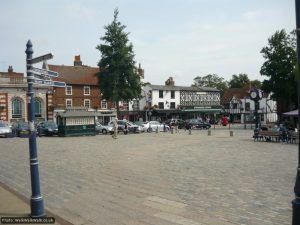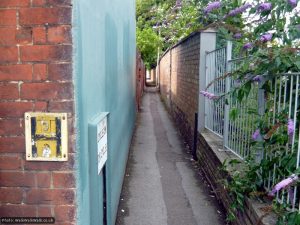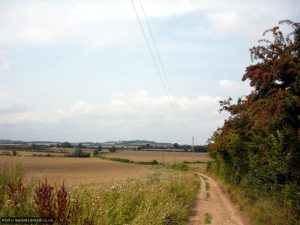Follow the links for more information on Hitchin Station (on the East Coast Mainline out of London Kings Cross) and Hitchin bus services. Buses travelling between the station and the town centre include some variations on the 81 service and the 90-something services. Alternatively, you could take one of the 90s in the other direction towards Letchworth, ask for Kingswood Avenue and pick the path up in Purwell.

The market place is arguably the most obvious location for starting this walk if you’re coming in from out of town or if the path doesn’t pass particularly close to your front door. It’s also a welcome source of shade, rest and refreshment.
We passed through on a Sunday and paused here for a sit down and a cup of tea. This often-busy spot was far from deserted but was also pleasingly peaceful with people reading the paper or window-shopping with friends. We found several shops and market stalls selling food, as well. Moving on, we took a route out of the town centre that took us down paths, streets and alleyways we didn’t know existed, no mean feat given our considerable acquaintance with Hitchin.
The walk’s route leads through The Arcade, a feature of the town centre that is of equal interest to residents and visitors and exemplifying perfectly how small, individually-owned shops add so much character to a market town like this one. More practically, there are public loos here if you need them.

Crossing the adjoining car park, and navigating the road junctions around Paynes Park, the HOOP then ducks down an astonishingly narrow and well-concealed alley (keep your eyes peeled for waymarks – this section is as good as impossible to follow on a map), heads along the side of a children’s playground, running parallel with Upper Tilehouse Street, then goes uphill and west on Grey’s Lane before joining Lucas Lane a short distance from the ground of Blue Harts Hockey Club.
Here the walker witnesses a really abrupt change of mood as the route leaves suburban streets for the first time since the village of Charlton to pick up a section of well-used field-edge paths. Paths that are particularly well-known to the HBS alumnus on the WalkWalkWalk team, since this was, back in the day, the route of the school’s cross-country running course. Our time on this section was enlivened by, on the one hand, an exposition of the many painful hours spent pounding these paths in the course of double games and, on the other, some excellent blackberrying.

Eventually the path heads into woods and passes the springs that rise to form the River Oughton which is, like the River Purwell, a tributary of the River Hiz. The Oughton Head and Old Westmill, which we will pass in due course, are responsible for lending their names to large swathes of the town’s northern suburbs. The path has reached its western extremity here and now takes a sharp turn east to head, via the Oughtonhead Common nature reserve, towards the northern village of Ickleford.
The reserve is regarded as the jewel in the crown of Hitchin’s wild spaces, most likely due to its combination of precious wetland habitat and suitability for public access, and it benefits from considerable community involvement in the form of a friends’ group that organises regular volunteer activities.
Certainly it adds very welcome variety to a path that has travelled through suburbia, along field edges, on woodland paths and now through the shaded reedy wilderness of the reserve in very short order. On the Sunday afternoon of our visit the weather was by now hot and sunny and Oughtonhead Common was one of the most populated places we encountered, the town centre not excluded.
Winding our way through the reserve paths, we paused to catch a glimpse of the former mill stream through the trees before heading away from the common for the next stage of our walk.